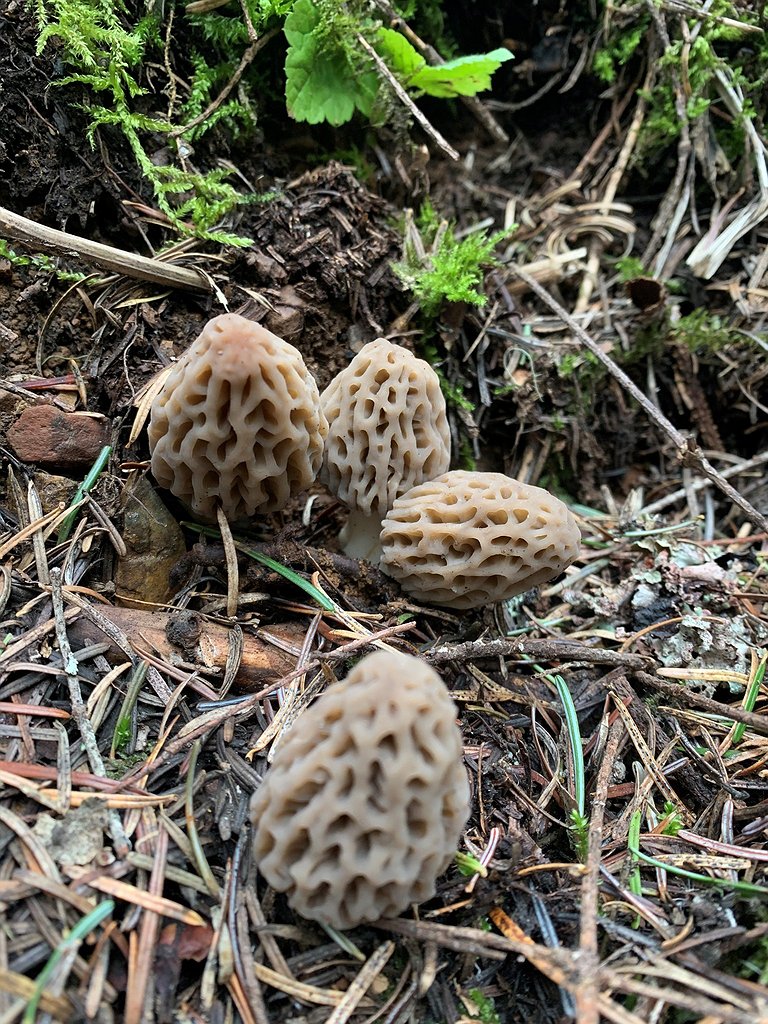Fun facts for foraging fungi
Morel season is almost here and with the weather warming up, the U.S. Forest Service is offering residents in the Idaho Panhandle helpful tips for finding the highly sought-after seasonal treasures.
Morels, much like the huckleberry, have not been commercialized and are only found in the wild. Because of this, the fungi are in high demand all summer, and bags of them can be sold for a pretty penny.
The fungus — which has a distinct honeycomb top with ridges on the cap — is also very picky about its growing habitat and climate, which can make it even harder to find than other fungi. While morel season usually starts around mid-May, their growing periods vary from year to year. If the soil is too warm, cold or dry, morels usually will not spring up.
Morels can be found in a wide range of areas, but are discovered most commonly in coniferous forests in the spring and early summer. According to the Idaho Conservation League, the fungus can be found near streams and ponds, in open areas, brushy areas, along trails, and “everywhere in between.” They can often be found in groups or “seams,” so when one is found, keep an eye out for others nearby.
“Morel mushrooms often fruit prolifically in the years after an area has been burned by wildfire,” Forest Service staff said.
The Forest Service has launched an interactive web map — The Northern Region Mushroom Hunter Helper — that helps people find the most likely hunting grounds for all mushroom types. This map, covering the areas around North Idaho and Northern Montana, shows where past wildfires and controlled burns have taken place, which is prime morel territory.
View the interactive map at bit.ly/49pzYwX.
There are many potential hazards people may run into when exploring a recent burn area. To ensure mushroom hunters are prepared for those hazards, the Forest Service also released a short document with potential risks involved in venturing into those areas. Check out that list at bit.ly/3U2mdQ7.
For those only interested in hunting in Idaho, the Forest Service has released its North Idaho Rx Fire map, where mushroom hunters can find past and planned prescribed fire locations across the U.S. Forest Service — Idaho Panhandle National Forests and Bureau of Land Management land in North Idaho. This map also provides information on the last five years of fire history in the area.
Visit the North Idaho map at bit.ly/3PLxT7i.
The Idaho Conservation League reminds all mushroom hunters to properly identify any fungi before consuming them, as many types are toxic to humans and animals.
“Some people can also be allergic to morels, so start with cooking and eating a small amount to make sure you do not have a reaction,” IDL staff said. “All morels must be cooked before eating. Morchella Elata, a common black morel found in Idaho, has also been reported to result in reactions when consumed with alcohol, so be cautious with anything else you might be consuming at the same time.”
Permits for mushroom harvesting are required in some areas of the Panhandle and surrounding regions to help the Forest Service “manage mushroom harvesting activities, monitor use and protect resources.”
“Mushrooms may be harvested anywhere in your National Forest unless otherwise restricted,” staff said. “Each ranger district will have specific information on any area closures or restrictions. Permits will be available at Forest Service offices. The type of permit you need depends on how many mushrooms you intend to harvest.”
To learn more about mushroom permits, visit bit.ly/3VJacAm.



